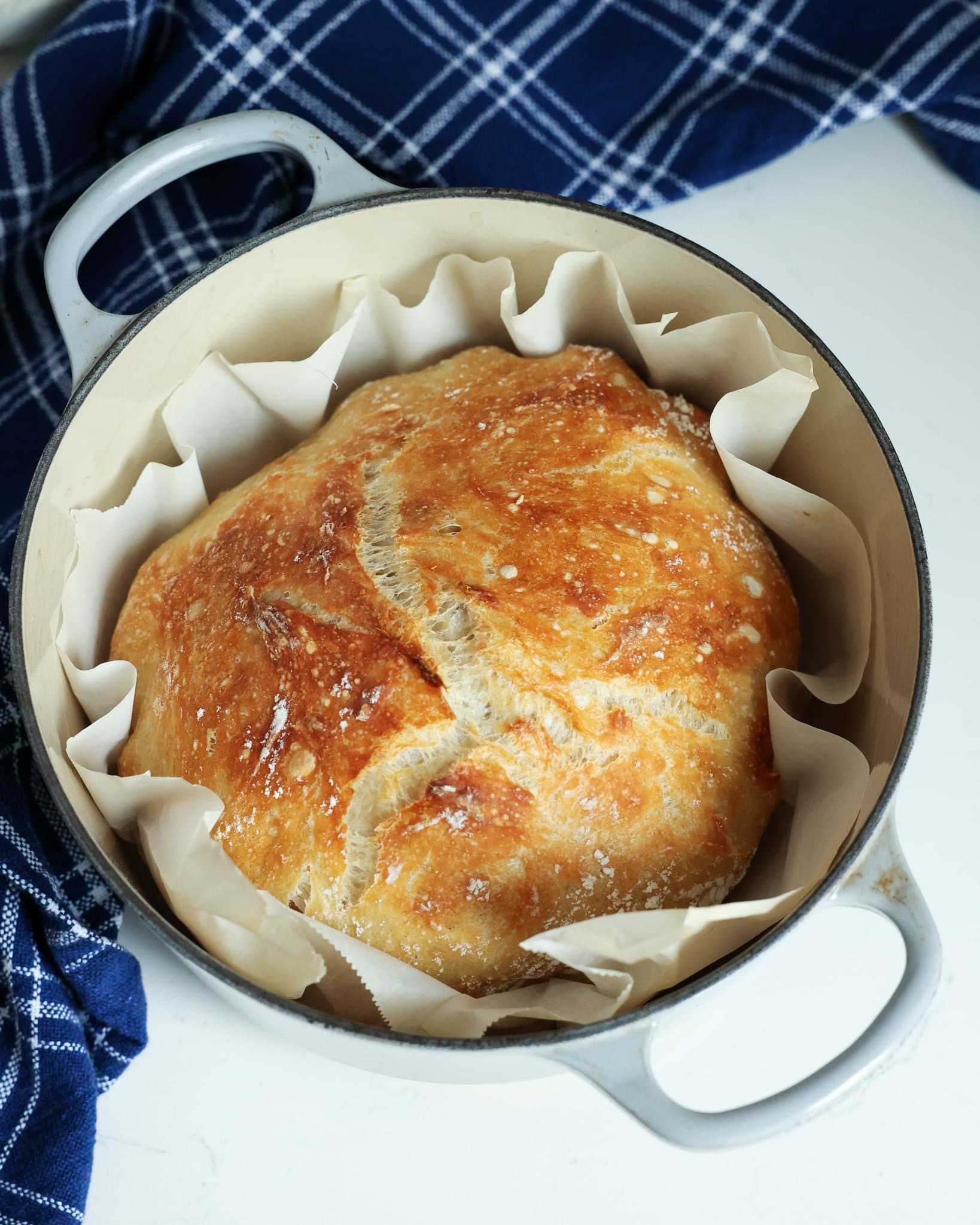Instructions:
1. In a large mixing bowl, combine the flour, salt, and yeast. Stir until the ingredients are evenly distributed.
2. Add the lukewarm water to the dry ingredients, mixing until a shaggy dough forms. Avoid overmixing, as the goal is to incorporate the ingredients without kneading the dough.
3. Cover the mixing bowl with plastic wrap or a clean kitchen towel and let the dough rest at room temperature for 12-18 hours. During this time, the dough will undergo fermentation, developing flavor and texture.
4. After the initial fermentation period, the dough should be puffy and bubbly. Preheat your oven to 450°F (230°C) and place a Dutch oven or heavy-bottomed pot with a lid inside to preheat as well.
5. While the oven is preheating, transfer the dough to a lightly floured surface and shape it into a round ball. You can use a bench scraper or your hands to gently shape the dough, but avoid kneading or overhandling it.
6. Once the oven is preheated, carefully remove the hot Dutch oven or pot from the oven. Using oven mitts, remove the lid and carefully transfer the shaped dough into the hot pot.
7. Cover the pot with the lid and return it to the oven. Bake the bread covered for 30 minutes to create steam and promote oven spring.
8. After 30 minutes, remove the lid from the pot and continue baking the bread uncovered for an additional 15-20 minutes, or until the crust is golden brown and crisp.
9. Once the bread is baked to perfection, carefully remove it from the oven and transfer it to a wire rack to cool completely before slicing.
10. Enjoy your freshly baked no-knead bread with your favorite spreads, cheeses, or as a delicious accompaniment to soups and salads.
Tips for Success
– Use high-quality ingredients: Opt for unbleached all-purpose flour and quality sea salt for best results.
– Experiment with hydration: Adjust the amount of water in the recipe to achieve your desired dough consistency and crumb structure.
– Embrace variations: Get creative with add-ins such as herbs, seeds, or dried fruits to customize your bread and add extra flavor and texture.
– Practice patience: Allow the dough to ferment and rise slowly for optimal flavor development and texture.
Conclusion:
No-knead bread is more than just a recipe – it’s a testament to the transformative power of time, patience, and simple ingredients. By embracing the principles of no-knead bread-making, you can unlock a world of possibilities in your own kitchen and create homemade bread that is as delicious as it is satisfying.
Whether you’re a beginner baker or a seasoned bread enthusiast, no-knead bread offers a rewarding and approachable way to elevate your baking skills and enjoy the incomparable taste of freshly baked bread at home.
So roll up your sleeves, dust off your mixing bowl, and embark on a journey of discovery and delight as you master the art of no-knead bread. With a little time, patience, and love, you’ll be rewarded with perfect loaves of bread that will nourish body and soul for years to come. Happy baking!
ENJOY!!


